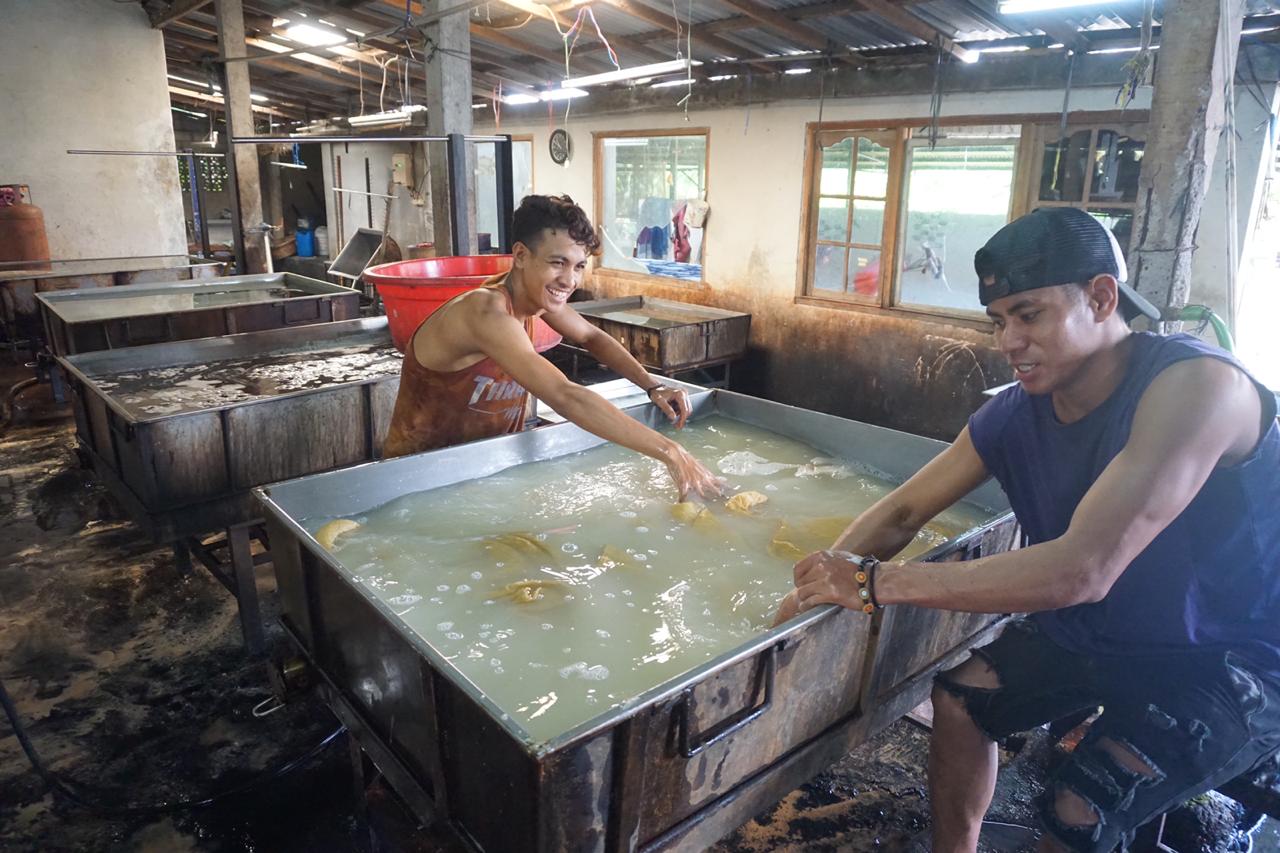
Natural dyeing with plants
Five primary plants used for natural dyeing. These plants include Umbrella tree leaves for black, mango leaves for yellow, mahogany leaves for brown, Indigofera leaves for blue or indigo, and Sappan wood for red.
By blending these five plants, a broad spectrum of additional colors can be produced. So far, more than 500 color variations have been created. However, the process of extracting dyes from these plants is more labor-intensive compared to conventional dyeing. It involves chopping, drying, and boiling the leaves for 7 to 8 hours to extract the dye.
Leaves are a preferred material for natural dyeing due to their abundance, ease of extraction, and the fact that trees remain unharmed, allowing the leaves to regenerate. The leaf waste is also repurposed as compost.
The extracted colors are applied using various techniques, not just for solid coloring but also for creating popular patterns such as gradations, eco-print, steam color, and tie-dye. Leading to the creation of unique, eco-friendly products with distinct qualities and high value.
The dyeing process
1.Selection of plant materials: Different plants produce different colors, so the first step is to select the plant material that contains the desired colorant. These plants include umbrella tree leaves that produce black color, mango leaves for yellow color, indigo plants produce blue dye, sappan wood creates red color and mahogany leaves for brown color. By combining these 5 plants other colors can be produced.
2.Color extraction: The plant leaves are chopped, dried and boiled for 7 to 8 hours to obtain the color extract.Leaves are the main material used to extract color because of its availability, ease of extraction and no need to cut down trees.
3. Straining and concentration: Once the color compounds are extracted, the liquid is strained to remove any remaining plant particles. The liquid extract will be transferred to a storage place while the leaf waste will return to the plantation to become compost.
4.Mordanting(optional): Some plant-based dyes require the use of mordants to enhance color fastness and help the dye bond with the fabric or material. Common mordants include vinegar.
5. Dyeing process: The fabric or material to be dyed is immersed in the dye bath. The dye molecules attach to the fibers, creating the desired color. The duration of immersion and the temperature can affect the color intensity and shade.
6. Drying and finishing: After the dyeing process is complete, the dyed material is dried at sunlight, and any excess dye is removed.
